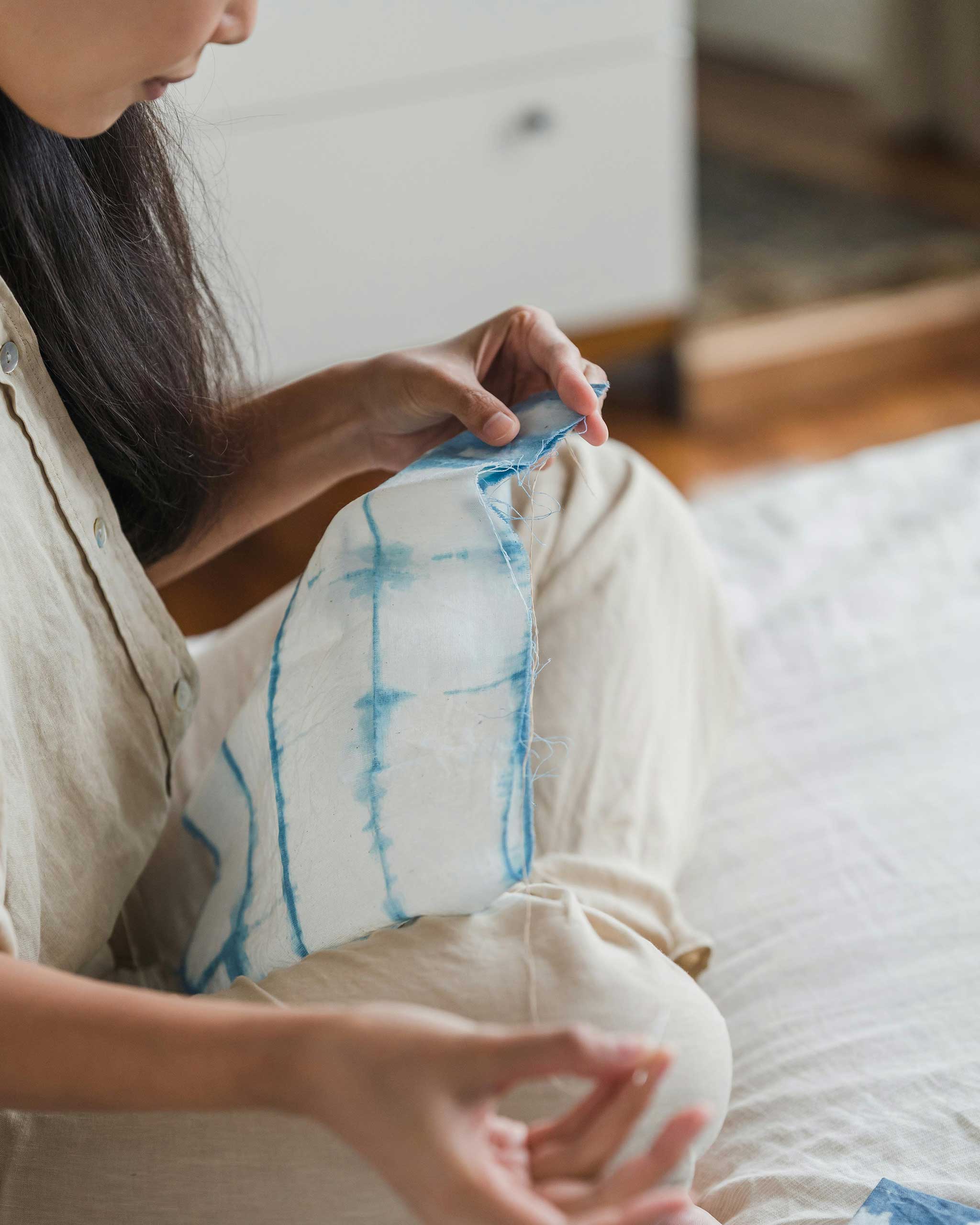Greta Hoffman / Pexels
There’s a scene in 27 Dresses where Katherine Heigl’s character, Jane, makes an unfortunate discovery. Her younger sister, Tess, has cut up their late mother’s wedding dress in order to make her own. It’s an heirloom that Jane had hoped to wear when she walked down the aisle one day herself. Jane is left incensed: it’s unfathomable to her that Tess would alter the dress so drastically.
A similar situation took place this week. For those not as chronically online as this writer, it all started when TikToker Amelia Liana did a number on a vintage Dolce & Gabbana dress. The dress in question was a black midi with a leopard-print lining that had “taken her years to track down”. The caveat? It was slightly too big for her. Not only did she get it altered, she also chopped off roughly 10 inches. What went from being a chic midi was turned into a classic LBD. No big deal, right?
Wrong. Viewers were shocked and upset with Liana’s actions, as if she too had chopped up a family heirloom. “How could you! This is such a crime,” one said. “WHAT HAVE YOU DONE!” said another. “I’m pretty sure the final product can be found on Shein,” they continued. You get the picture. You would think she was Kim Kardashian and had just worn that Marilyn Monroe dress to the Met Gala.
In some ways, the criticism is valid. Completely changing a vintage dress that you’ve allegedly searched high and low for doesn’t make much sense. If you wanted a little black dress, why not buy a little black dress? And a vintage designer one – that is assumedly rare and that others would be so pleased to own – at that?
Yet the public outcry feels a tad dramatic. Ultimately she took a gorgeous dress and changed it into something that is equally gorgeous. The little black dress is now a part of her wardrobe that she will wear (and hopefully rewear), whereas it could have just been collecting dust otherwise. If that’s what it takes to make sure that a garment doesn’t end up at landfill, then so be it.
Beyond that, tailoring is one of the oldest professions. It can be traced back to the middle ages, with some of the earliest tailors linen armourers for the military. In the 20th century, it was standard for sewers to alter their clothing to ebb and flow with changing bodies. They would add in a pocket, buttonholes or lace trimmings to make an existing piece feel new. Just because a piece is vintage, does that make it exempt to alteration?
“I wouldn’t suggest anyone cutting up to DIY one-of-one museum quality garments, but this conversation typically surrounds vintage ready-to-wear pieces,” says writer Chloe Kennedy. The A Strip of Fabric Substack founder argues that “fashion history is an anthropological study and pieces that have human intervention provide vital context to its evolution. Those saying she destroyed it are speaking in the present day, but now this dress will reflect both the time it was made and worn.”
For Greg Chester, a fashion archivist at west London’s One Of A Kind boutique, the debate is a little bit different. “When it comes to pieces like this Dolce & Gabbana dress, I’m not opposed to alterations on vintage garments. However, preserving original runway designs is crucial, particularly for items with historic importance. These pieces are significant and reflect the evolution of fashion over time. While sustainability is crucial, maintaining the authenticity of such pieces ensures their lasting value for future generations.”
Fashion commentator and educator Rian Phin agrees. “I think any time someone makes use of vintage or second-hand fashion in their closet, it’s great. There are too many clothes floating around, piling up in landfills, collecting dust in closets for people to be so precious with clothes. No one should be insulted by an alteration that’s putting clothes to good use,” says Phin. “It isn’t like an alteration that suits the current owner is destroying the dress, and also there’s just so much vintage designer on the second-hand market to go around – nothing is lost!”
No matter where you land on the matter, one thing can be agreed: reusing and repurposing clothes that otherwise might end up in landfill can never be a bad thing. What one woman does with an item she has bought is no need for a public outcry. Liana did not cut up our mother’s wedding dress!
This article was originally published on British Vogue.
